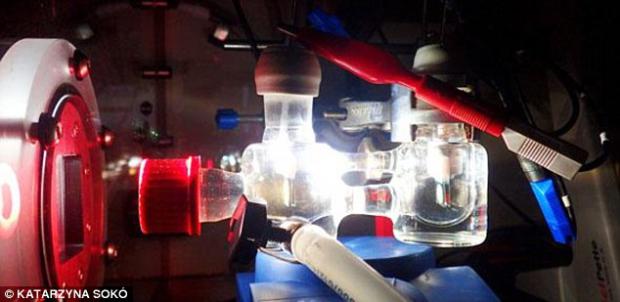
Breaking News
 Want to live to 100? DON'T turn vegetarian: Meat eaters are more likely to hit the milestone...
Want to live to 100? DON'T turn vegetarian: Meat eaters are more likely to hit the milestone...
 Pete Hegseth's review of female combat troops spurs furious backlash within the ranks:
Pete Hegseth's review of female combat troops spurs furious backlash within the ranks:
 Trump banishes fruit juice and urges red meat and butter as he declares WAR on American...
Trump banishes fruit juice and urges red meat and butter as he declares WAR on American...
 Russia and China fear NATO because of ME: Trump launches ferocious attack on allies...
Russia and China fear NATO because of ME: Trump launches ferocious attack on allies...
Top Tech News
 The First Production All-Solid-State Battery Is Here, And It Promises 5-Minute Charging
The First Production All-Solid-State Battery Is Here, And It Promises 5-Minute Charging
 See inside the tech-topia cities billionaires are betting big on developing...
See inside the tech-topia cities billionaires are betting big on developing...
 Storage doesn't get much cheaper than this
Storage doesn't get much cheaper than this
 Laser weapons go mobile on US Army small vehicles
Laser weapons go mobile on US Army small vehicles
 EngineAI T800: Born to Disrupt! #EngineAI #robotics #newtechnology #newproduct
EngineAI T800: Born to Disrupt! #EngineAI #robotics #newtechnology #newproduct
 This Silicon Anode Breakthrough Could Mark A Turning Point For EV Batteries [Update]
This Silicon Anode Breakthrough Could Mark A Turning Point For EV Batteries [Update]
 Travel gadget promises to dry and iron your clothes – totally hands-free
Travel gadget promises to dry and iron your clothes – totally hands-free
 Perfect Aircrete, Kitchen Ingredients.
Perfect Aircrete, Kitchen Ingredients.
 Futuristic pixel-raising display lets you feel what's onscreen
Futuristic pixel-raising display lets you feel what's onscreen
 Cutting-Edge Facility Generates Pure Water and Hydrogen Fuel from Seawater for Mere Pennies
Cutting-Edge Facility Generates Pure Water and Hydrogen Fuel from Seawater for Mere Pennies
Scientists have invented a way to create 'unlimited renewable energy'...

Researchers from the University of Cambridge have reached this 'milestone' by splitting water into hydrogen and oxygen.
They did this through using a technique called semi-artificial photosynthesis that is based on the same process plants use to convert sunlight into energy.
Hydrogen, which is produced when the water is split, could potentially be a green and unlimited source of renewable energy.
Researchers did this by reactivating hydrogenase, an enzyme present in algae, that can reduce protons into hydrogen.
Oxygen is produced as a by-product of photosynthesis when the water absorbed by plants is 'split'.
It is one of the most important reactions on the planet because it is the source of nearly all of the world's oxygen.
Researchers used natural sunlight to convert water into hydrogen and oxygen using a mixture of biological components and manmade technologies.
Academics at the Reisner Laboratory in Cambridge's Department of Chemistry developed the new technique of solar-driven water-splitting.



